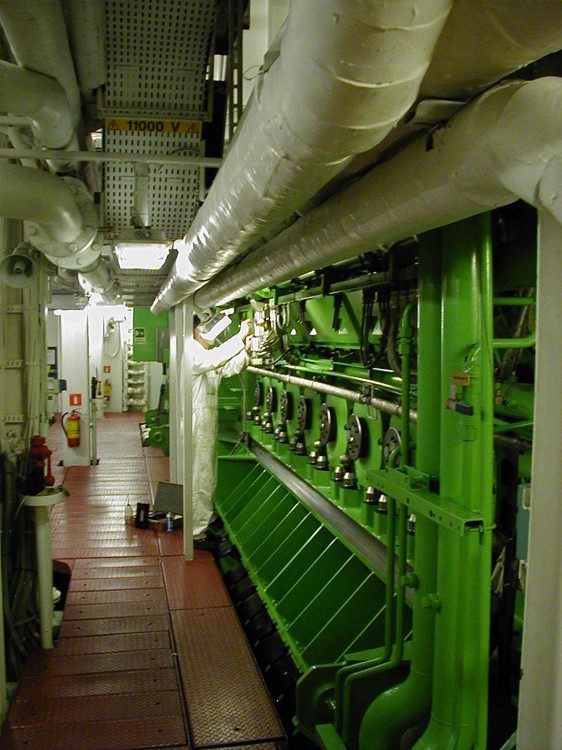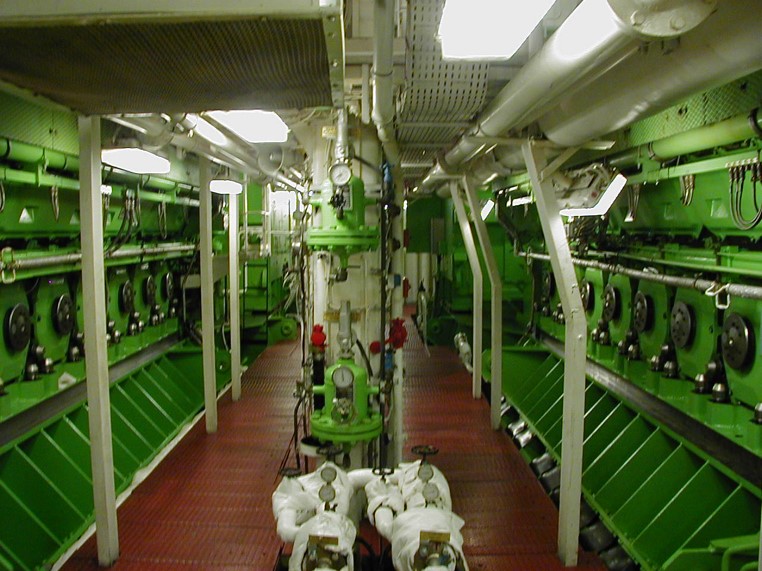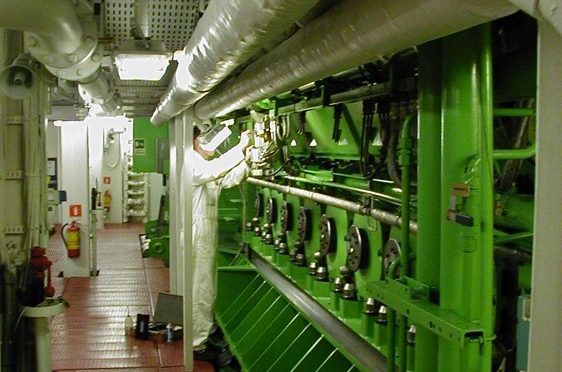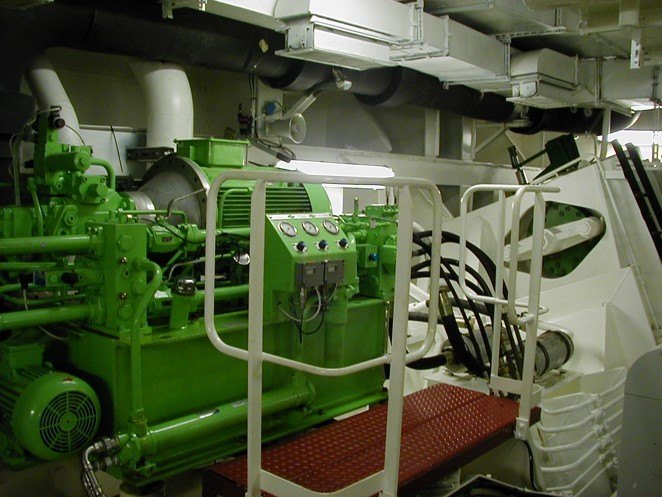We have just docked in Auckland, New Zealand. We now have 3 more ports ahead of us in quick succession and I know, from experience, I will be hard pressed to keep you up to date.
Some readers have asked for details about the Technical spaces. So here, I’ll keep to the main items.
Evaporators, 3 of them, are used to make water. Manufactured b Alpha Laval, 2 working from waste heat, the 3rd by steam heating. Heat is used to boil seawater and distill fresh water out of it. The brine (salt water) which is left over is pumped back into the sea. The 3 evaporators together are able to produce 1,400,000 ltrs, or 370,000 gallons per day, (yes, not a typo :-)). The average consumption per day is 650,000 ltrs or 174,000 gallons per day.
The main engines; power is produced by 5 diesel engines, made by Sulzer. They create sufficient power to drive the ship and provide electricity to the rest of the ship, i.e. they are diesel generators. 3 are 12-cylinder engines of 8.6MW or 11,592 HP each; 2 16-cylinders of 11.5MW or 15, 456 HP each. Total power is 48.96 MW or 65,656 HP. Average consumption is 96 gallons/mile or 196 ltrs/mile, (so don’t take this ship for a shopping trip 



Stabilisers are used to make the ship more stable in rough seas, they will prevent the ship from heavy rolling. Both stabilisers are controlled by gyroscope.

The Azipod is a podded propulsion system, azimuthing through 360°. It incorporates an electric, double wound AC motor mounted on an extremely short propellor shaft. The motor drives a fixed-pitch propellor, made by Kamewa. each propellor has a diameter of 5.4m or 17.7ft. Each pod has a power of 15.5 MW or 20,786HP

Azipod steering motor
The Cycloconverter Room
A Cycloconverter converts AC with a constant frequency directly to an AC with a varying frequency

Fuel and Lube oil separators. These are basically centrifugal pumps. They are used to ensure that impurities (and any water) are out of the fuel prior to it being burned in the main engines






